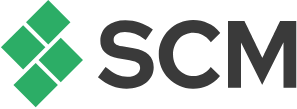The Power of SEO: How to Rank Your Business Higher on Google

In today’s digital age, the visibility of your business online can make or break your success. With billions of searches conducted on Google daily, having your website rank higher on search engine results pages (SERPs) is crucial. This is where Search Engine Optimization (SEO) comes into play. SEO is the practice of enhancing your website to improve its visibility when people search for products or services related to your business. The higher your website ranks, the more likely you are to attract potential customers.
Let’s dive into the latest SEO strategies and tips that can help your business climb the ranks on Google.
Optimize for User Experience (UX)
User experience is at the forefront of SEO. Google’s algorithms have become incredibly sophisticated, prioritizing websites that provide a seamless, intuitive, and enjoyable experience for users. To optimize for UX:
- Mobile Optimization: Ensure your website is mobile-friendly. With more than half of global web traffic coming from mobile devices, Google prioritizes sites that offer a good mobile experience. This all has to do with layout and positioning. It is also important that all of the information you include on the desktop version of your site is available on the mobile version.
- Page Speed: A slow-loading website can frustrate users and cause them to leave. Use tools like Google’s PageSpeed Insights to analyze and improve your site’s loading speed. It is important to understand Google uses a 4G connection to test your page speed. Optimizing images and code to work on slower connections is vital. Not all of your customers have blazing fast internet.
- Navigation: Make sure your website is easy to navigate. A clear structure with intuitive menus helps users find the information they need quickly, which reduces bounce rates.

Conduct Thorough Keyword Research
Keywords are the foundation of SEO. They are the terms and phrases that users type into search engines. To rank higher on Google, you need to understand what keywords your target audience is using:
- Long-Tail Keywords: These are longer, more specific keyword phrases. While they have lower search volumes, they often have higher conversion rates because they capture users who are closer to making a purchase. An example would be “organic coffee shops near me”. This customer is specifically looking to buy at a local shop, vs someone who is searching for “organic coffee” and is looking for more general information.
- Use Tools: Leverage keyword research tools like Google Keyword Planner, SEMrush, or Ahrefs to discover relevant keywords with high search volume and low competition.
- Intent Matters: Understand the intent behind the keywords. Are users looking for information, trying to make a purchase, or just browsing? Tailor your content to match these intents.
Create High-Quality, Relevant Content
Content is king in the world of SEO. Google favors websites that consistently publish high-quality, relevant content that answers users’ queries:
- Content Depth: Aim for in-depth content that thoroughly covers a topic. Longer articles that offer valuable insights tend to perform better in search rankings.
- Regular Updates: Keep your content fresh by regularly updating your existing pages with new information and publishing new articles or blog posts.
- Multimedia: Incorporate different types of content, such as videos, infographics, and images, to make your pages more engaging and informative.
On-Page SEO Best Practices
On-page SEO refers to the optimization of individual web pages to rank higher and earn more relevant traffic. This is getting into the more technical side of SEO and is important, but will require a website developer or someone comfortable with HTML to do. Key aspects include:
- Title Tags and Meta Descriptions: Craft compelling, keyword-rich title tags and meta descriptions. These elements not only help Google understand your content but also influence click-through rates from SERPs.
- Header Tags (H1, H2, H3): Use header tags to structure your content. This makes it easier for both users and search engines to navigate your pages. Think of this as structuring a college or high school essay. The H1 is the title of the page while H2 are the sub titles that break out the different sections that relate to the H1.
Internal Linking: Strategically link to other relevant pages on your website. Internal links help spread link equity across your site and improve the crawlability of your content.
Build High-Quality Backlinks
Backlinks, or inbound links from other websites, are a critical factor in SEO. They signal to Google that your content is trustworthy and authoritative:
- Guest Blogging: Write guest posts for reputable sites in your industry. In exchange, you can often include a link back to your own website.
- Broken Link Building: Identify broken links on other websites and offer your own content as a replacement. This is a win-win situation—you get a backlink, and the site owner fixes a broken link.
- Create Shareable Content: Content that is valuable and shareable, like infographics or comprehensive guides, naturally attracts backlinks from other sites.
Leverage Local SEO
If your business serves a local market, local SEO is essential. It helps your business appear in searches for local services:
- Google My Business: Claim and optimize your Google My Business listing. Ensure your business information is accurate and up-to-date.
- Local Keywords: Use location-based keywords in your content and metadata. For example, “SEO services in [Your City].”
- Online Reviews: Encourage satisfied customers to leave positive reviews on your Google My Business page. Reviews can significantly impact your local search rankings.
Monitor and Analyze Your SEO Performance
SEO is not a one-time effort; it requires continuous monitoring and adjustment. Use analytics tools to track your progress:
- Google Analytics: Monitor your website traffic, user behavior, and conversion rates to understand what’s working and what needs improvement.
- Search Console: Google Search Console helps you track your search performance, including which queries bring traffic to your site and how your pages are performing in SERPs.
- Regular Audits: Perform regular SEO audits to identify and fix issues that could be hindering your performance.
Conclusion
SEO is a powerful tool that can significantly impact your business’s online visibility and success. By optimizing your website for user experience, conducting thorough keyword research, creating high-quality content, and building valuable backlinks, you can improve your search engine rankings and attract more potential customers. Remember, SEO is an ongoing process, so keep refining your strategies to stay ahead of the competition.
Investing in SEO today will pay off in the long run as your business climbs higher on Google and reaches a broader audience. Ready to start optimizing? SCM Marketing Solutions is here to help you navigate the ever-changing landscape of SEO and drive your business toward digital success.
